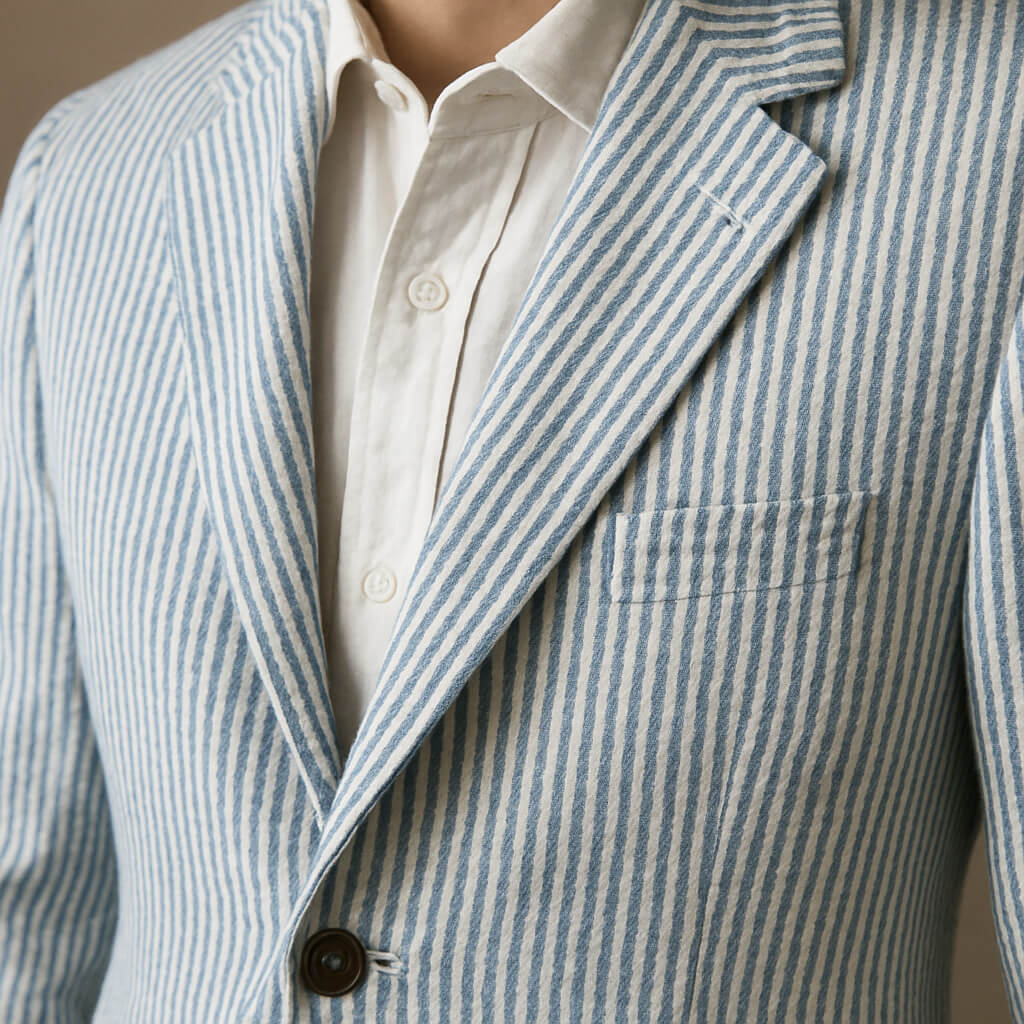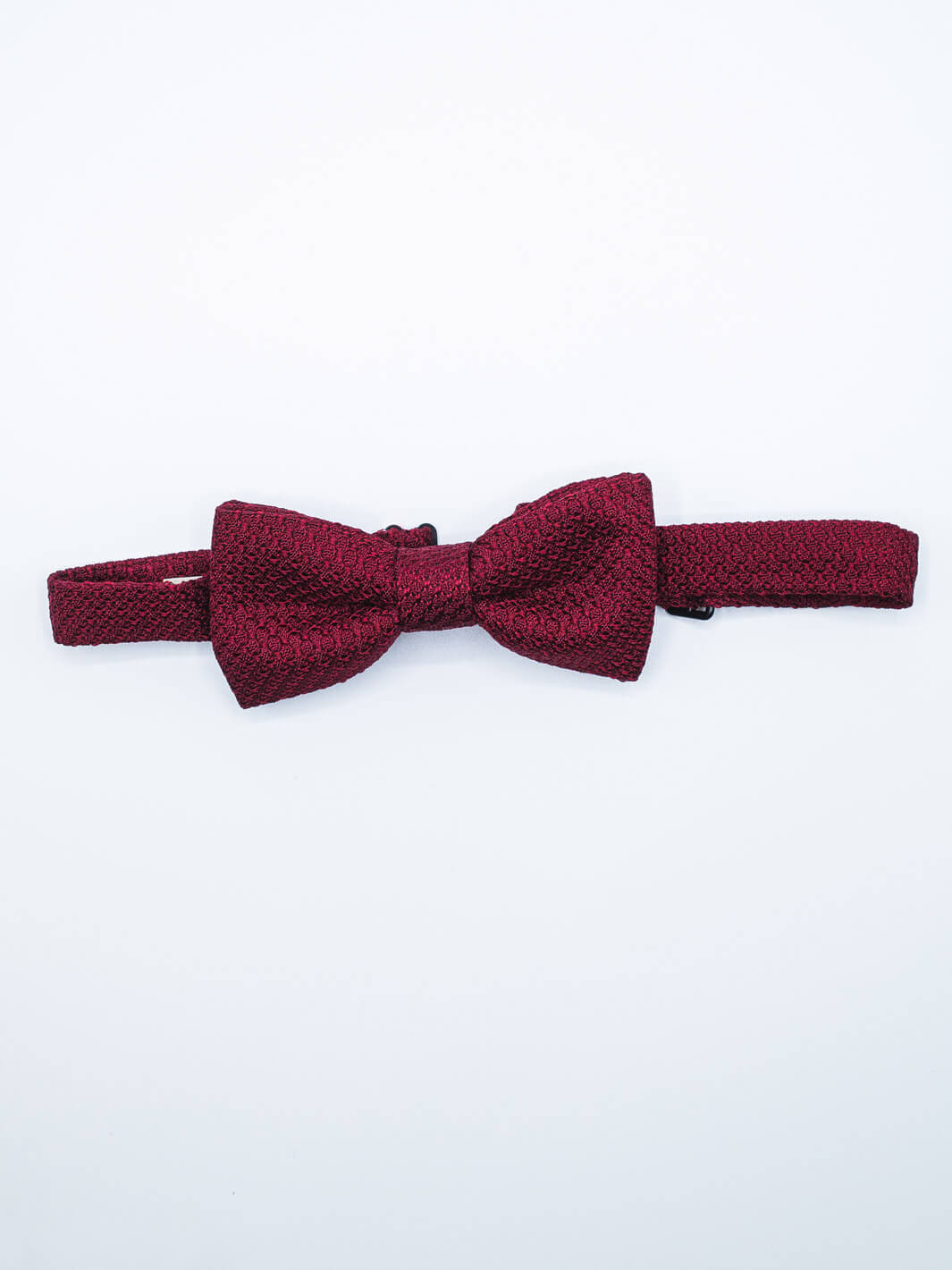Speaking in purely sartorial terms, what’s the coolest album cover of all time? David Bowie’s androgynous guise on The Man Who Sold the World and Prince’s shimmering, purple-hooded cape on Purple Rain would no doubt feature prominently in any straw poll. But what about cover art where the artist’s outfit isn’t just flamboyant pop mythology—something us ordinary folks might actually wear? Or better yet, aspire to wear?
My nomination: The Musings of Miles by jazz legend Miles Davis. This understated gem of cultural folklore shows the great man resplendent in a cap and a loose, imperious seersucker jacket—a look that nodded to the working-class, American South milieu from which he drew creative energy.

Just a few years later, seersucker would earn another iconic moment in pop culture: its prominent place in Gregory Peck’s wardrobe as Atticus Finch in the 1962 film adaptation of To Kill a Mockingbird, further cementing its association with the Deep South. But the story of this puckered fabric stretches much further back…
From Mughals to Dukes: Seersucker’s Rich History
G. Bruce Boyer once praised seersucker for its “insouciant swagger,” but its initial appeal had less to do with style than with practicality. European traders in the 17th century were drawn to the fabric’s breathability and durability when they first encountered it in the Mughal Empire, which then ruled much of India. The word “seersucker” comes from the Persian shir o shekar—meaning “milk and sugar”—a reference to the cloth’s alternating smooth and puckered textures, designed to lift the material away from the skin and allow air to circulate.
That same rugged utility—combined with its lightness and ease of laundering—later made seersucker a favored choice for Spanish soldiers in the Philippines and Morocco, and for Confederate Zouave units during the American Civil War.

A key milestone in seersucker’s transition into civilian life came in 1909, when New Orleans tailor Joseph Haspel assembled the first suit from the fabric. Emulations of his creation soon found their way into wardrobes across the Southern United States. By the 1920s, seersucker had been enthusiastically adopted by the preppy denizens of Princeton’s campus, and its broader popularity surged during World War II—thanks in part to the Duke of Windsor, who famously wore it while residing in the Bahamas. From there, it became a staple in fashionable enclaves from California to the Riviera.
Many sources cite the proliferation of air-conditioning as a reason for seersucker’s decline in prominence. Yet it remains a culturally iconic textile, as evidenced by the continued observance of “Seersucker Thursday”—an annual tradition in Congress, initiated by Republican Senator Trent Lott of Mississippi in 1996 to “bring a little Southern charm to the Capitol,” and still recognized on a designated warm day each June.

Pucker Up: Enjoying Seersucker’s Breezy Flamboyance Today
Despite sometimes being referred to as “hickory stripe” or “railroad stripe,” seersucker is actually defined by its puckered texture rather than the distinctive striped pattern with which it’s commonly associated. This wrinkled effect is achieved through a weaving method known as “slack-tension weave,” in which alternating warp threads are fed at different tensions. Many clothmakers follow this principle using two contrasting colors, but there’s no reason seersucker can’t be solid or even check-patterned.

Today, it’s used for shorts, sport shirts, and even suspenders—such as these Classic Grey Seersucker Suspenders made from a lightweight cotton-seersucker blend—and, of course, for suits. One traditional method of producing seersucker involved blending cotton with silk or linen, which shrink at different rates to create the fabric’s characteristic texture. These days, however, superior seersucker is typically made entirely from high-quality cottons like Pima or Egyptian, prized for their softness and durability. The weaving itself—particularly the intricate slack-tension process—remains a key marker of quality.

Naturally, all seersucker fabrics offered in our made-to-measure and bespoke divisions are of the highest quality. Customers can choose from a range of sources, including refined selections from Loro Piana and Zegna, when available. Caccioppoli regularly offers seasonal bunches in cotton and stretch-cotton blends, in both classic stripes and solid colors. Solbiati—renowned for its linen and linen-cotton seersuckers—provides washed, textured options in natural tones as well as traditional puckered stripes.
And quality matters—especially if you're aiming to channel the breezy, effortless confidence of figures like Miles Davis, Atticus Finch, or even Tom Hagen in The Godfather Part II. Wearing seersucker well is about more than comfort; it’s about presence. As American author Damon Runyon once put it, “A man wearing a seersucker suit with aplomb could cash a check anywhere in New York with no questions asked.”









